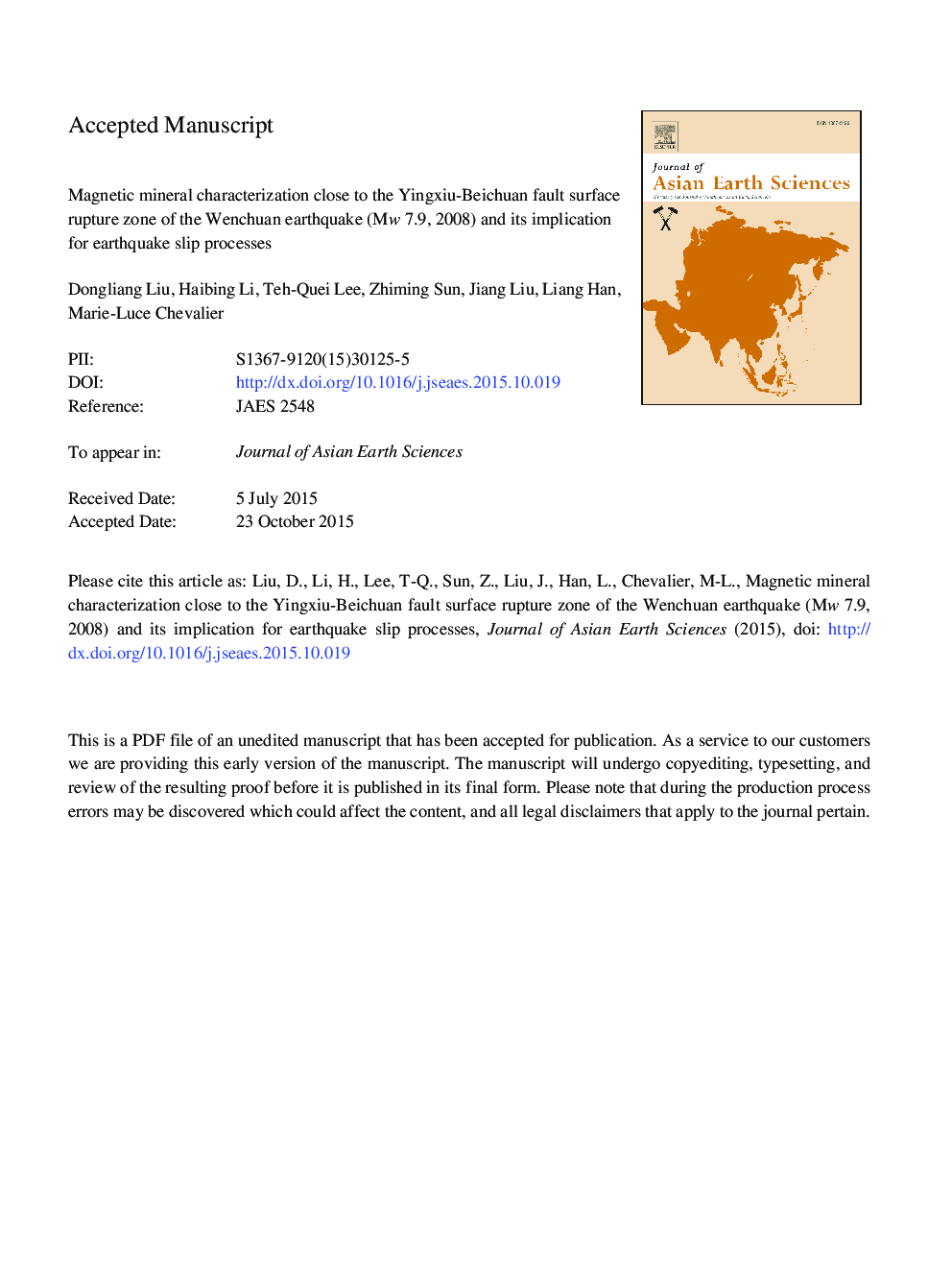| کد مقاله | کد نشریه | سال انتشار | مقاله انگلیسی | نسخه تمام متن |
|---|---|---|---|---|
| 6444022 | 1640356 | 2016 | 51 صفحه PDF | دانلود رایگان |
عنوان انگلیسی مقاله ISI
Magnetic mineral characterization close to the Yingxiu-Beichuan fault surface rupture zone of the Wenchuan earthquake (Mw 7.9, 2008) and its implication for earthquake slip processes
دانلود مقاله + سفارش ترجمه
دانلود مقاله ISI انگلیسی
رایگان برای ایرانیان
کلمات کلیدی
موضوعات مرتبط
مهندسی و علوم پایه
علوم زمین و سیارات
زمین شناسی
پیش نمایش صفحه اول مقاله

چکیده انگلیسی
The 2008 Mw 7.9 Wenchuan Earthquake produced two major rupture zones: one in the Yingxiu-Beichuan fault zone (YBF) and another in the Anxian-Guanxian fault zone (AGF). A shallow trench was dug in Bajiaomiao village, Dujiangyan, Sichuan Province, which experienced a â¼4.3 m vertical offset during this large earthquake. The hanging wall of the YBF in this trench includes fault gouge and breccia. Optical microscope observations and X-ray diffraction (XRD) measurements show obvious differences between the fault gouge and breccia. Moreover, rock magnetism measurements were collected and include mass magnetic susceptibility (MS), Isothermal Remnant Magnetization (IRM), Saturation Isothermal Remnant Magnetization (SIRM), high-temperature thermo-magnetism (K-T) and magnetic hysteresis loops. Several cm-thick magnetic mineral anomalies are observed close to the Wenchuan Earthquake surface rupture zone of the YBF. Magnetite and Fe-sulfide are the main magnetic carrier materials for the fault rocks close to the surface rupture zone, including 3 cm-thick fault gouge and 3 cm-thick fault breccia, while the other fault breccia, further from the surface rupture zone, contains the paramagnetic minerals. The possible magnetic change is attributed to newly-formed magnetite from paramagnetic minerals at high temperatures (>500 °C) during the large earthquake, implying that the YBF has ever experienced high-temperature thermal pressurization earthquake slip dynamics. Moreover, the YBF has also experienced high-temperature frictional melting earthquake slip dynamics, constrained by the multiple vein pseudotachylite. These high-temperature earthquake slip processes may be responsible for the high dip angle thrust characteristic of the YBF.
ناشر
Database: Elsevier - ScienceDirect (ساینس دایرکت)
Journal: Journal of Asian Earth Sciences - Volume 115, 1 January 2016, Pages 468-479
Journal: Journal of Asian Earth Sciences - Volume 115, 1 January 2016, Pages 468-479
نویسندگان
Dongliang Liu, Haibing Li, Teh-Quei Lee, Zhiming Sun, Jiang Liu, Liang Han, Marie-Luce Chevalier,